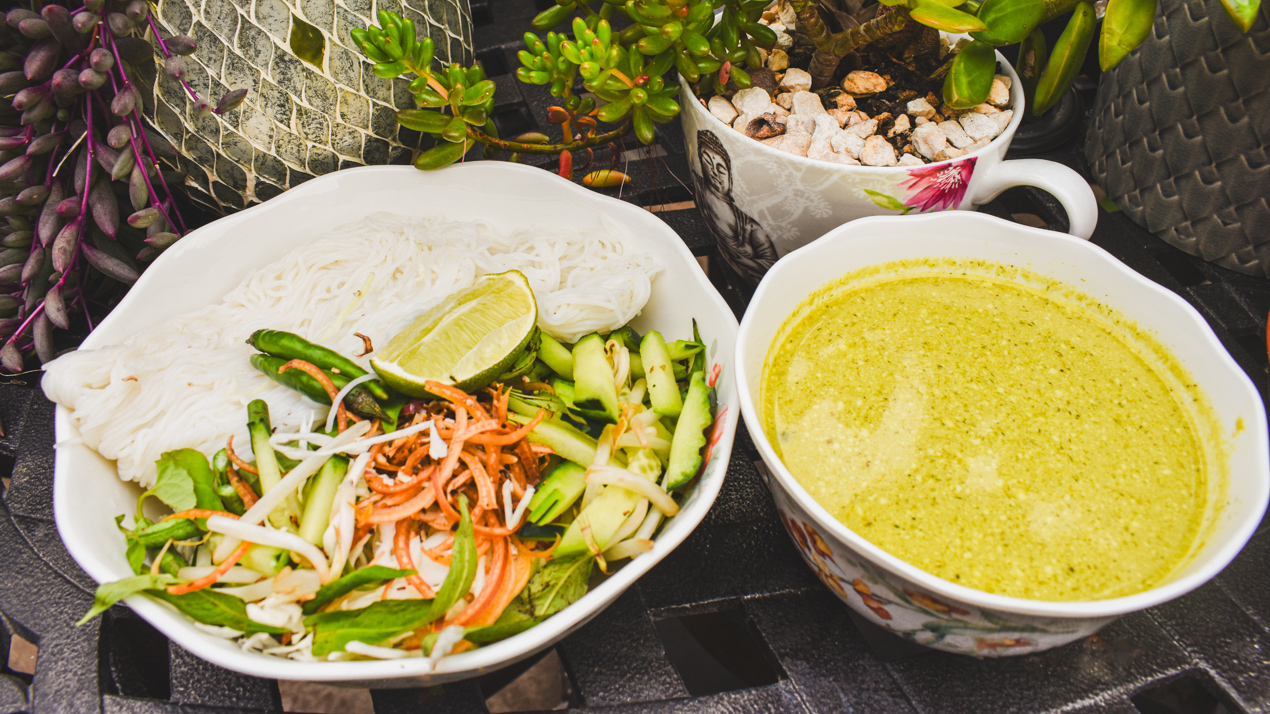
A bowl of num banh chok on the table.
Fresh Voices
Food, Culture, and Community
A traditional meal connects a community much in the same way the Aquarium does.
Growing up as a teen in a refugee household, I remember that food was the focus for my family. Food was more than just nourishment. It was a connection to the stories of our ancestors and the stories of our descendants. Eating our meals together was a way for us to share and reconnect with each other as a family. Food helped cultivate and build a stronger community.
I realized now that my strong sense of Cambodian culture and community was developed early on in life at the dinner table listening to stories of my parent’s childhood and family traditions and how we were connecting to our new home and community. Food becomes a part of who each of us are, and many of us remember certain foods from our childhood with warm feelings and fond memories. Food from our family often becomes the comfort food we seek as adults in times of frustration or in times of celebration. For me, it’s the traditional Num Banh Chok, which is a rice noodle dish served alongside a light fish soup with lemongrass base, paired with fresh local herbs and green vegetables.
The story of Num Banh Chok goes back to the earliest days of Cambodian civilization, and the making of the noodles is a labor-intensive process that brought the community together to help with the process of grounding the rice by a stone mill. This is a meal made by the community and eaten with all community members.
The smell and taste of the lemongrass fish soup became something very familiar to me and reminds me of my mom.
Now, whenever I have gatherings of family and friends for any events, I often serve Num Banh Chok as I remember the fish soup my mom used to make for her family. Refugees and immigrants bring the food of their countries with them wherever they go and preparing traditional food is a way of preserving their culture when they move to new communities. We should embrace our heritage through our culture’s food, but we should also become more informed about other cultures in our shared community by trying their foods. Food is a portal into culture and community.
Traditional cuisine like Num Banh Chok is passed down from one generation to the next. It is an expression of cultural identity.
I take pride as I get involved in the community. It’s a privilege to serve as the Aquarium’s ambassador and support the conservation projects by bringing awareness to the community through hosting different events and serving foods from my culture. I feel proud to see that the Aquarium of the Pacific has redefined the modern aquarium by serving as a community gathering place where diverse cultures are celebrated and how diversity within our communities are supported. At the same time, how it allows spaces for real discussions and conversations to bring awareness on issues that harm our planet and ocean.

Sam Chanwantha Limon
Sam Chanwantha Limon serves on the Aquarium’s Board of Directors and helped to create our Southeast Asia Day celebration. Her extensive community service includes serving on the board of advisors and as the scholarship chair for the Los Angeles County Cambodian Employees Association and serving on the board of United Khmer American Coalition.